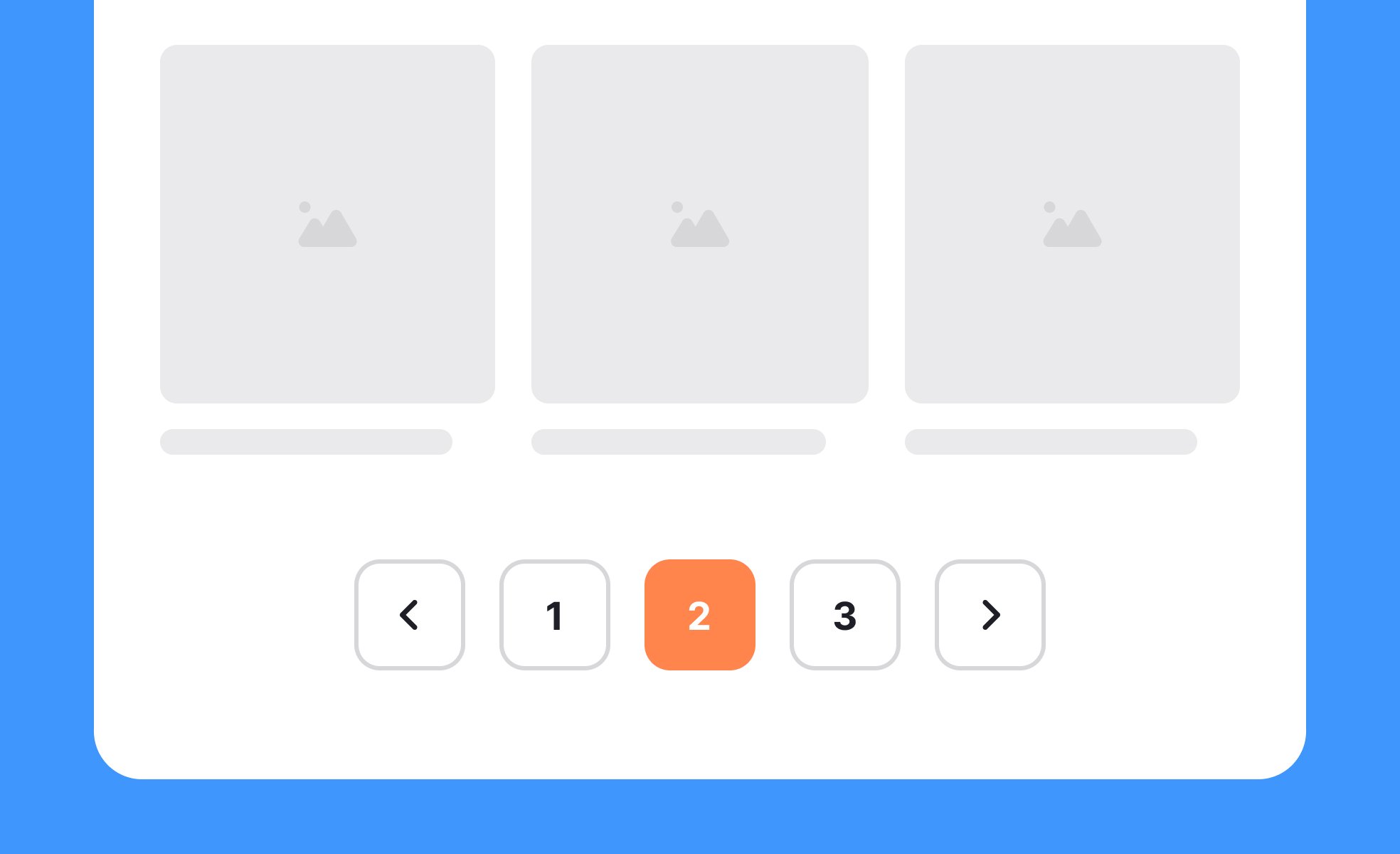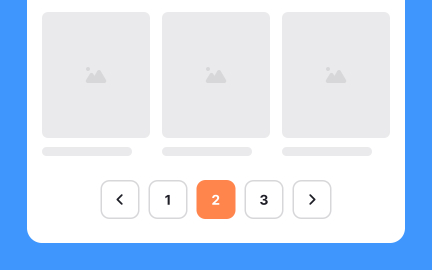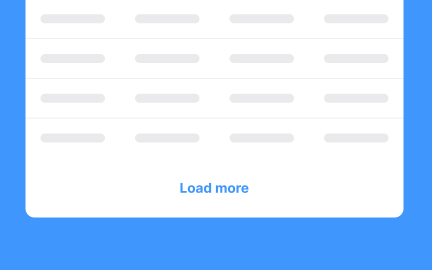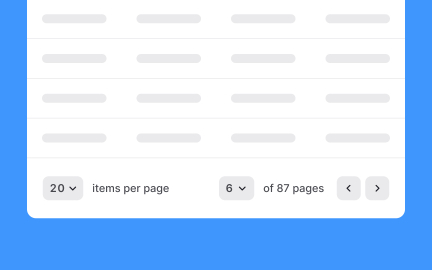Pagination
Pagination divides large sets of content into multiple pages, making information easier to navigate, faster to load, and more structured for users.

TL;DR
- Breaks content into multiple pages.
- Improves readability and load performance.
- Provides numbered or sequential navigation.
- Common in search results, catalogs, and forums.
Definition
Pagination is the process of splitting content across multiple pages with navigation controls, allowing users to move through large datasets or long lists in manageable chunks.
Detailed Overview
Pagination is one of the oldest and most reliable patterns in digital design. It organizes long or complex sets of content into discrete sections, enabling users to move through information step by step. Search engines, product catalogs, and discussion boards all use pagination to make browsing content more practical.
A frequent question is why pagination is chosen over infinite scrolling. Infinite scrolling loads content continuously as users move down a page, which is convenient for exploration but can make it difficult to locate specific items again. Pagination, by contrast, provides a structured system with numbered steps or “next” and “previous” controls, allowing users to easily track their progress and return to particular points.
Another common query relates to performance. By splitting large data sets into pages, systems only load a portion of the content at once. This reduces load time and improves responsiveness. For example, an e-commerce site with thousands of products would overwhelm both users and systems if forced to load everything on a single page. Pagination improves efficiency without sacrificing access.
Teams also ask about user control. Pagination empowers users to decide how they browse content. They can skip to later pages, return to earlier ones, or jump directly to a desired section. This sense of orientation and control is one reason why pagination continues to be a standard design pattern despite alternatives like infinite scrolling.
Accessibility is another important consideration. Pagination provides clear, predictable navigation points that screen readers and assistive technologies can interpret. Numbered pages, meaningful labels, and proper focus states make pagination inclusive and consistent. This contrasts with infinite scrolling, which can sometimes create challenges for accessibility tools.
Learn more about this in the Pagination Exercise, taken from the Common UI Components II Lesson, a part of the UI Components I Course.
Pagination offers structure and orientation by dividing content into discrete steps. This makes it easier to find and revisit specific items. Infinite scrolling, while useful for continuous exploration, often makes navigation harder because it lacks defined boundaries.
Users who need precision often prefer pagination, while those browsing casually may enjoy scrolling.
By loading only a portion of data at once, pagination reduces server strain and speeds up response times. For example, showing 20 products per page instead of thousands keeps load times manageable.
This approach balances accessibility to content with technical efficiency.
Pagination controls should be clearly visible, consistent in placement, and labeled in a way that makes sense. “Next” and “Previous” buttons support linear navigation, while page numbers allow direct jumps.
Highlighting the current page helps users track their location.
These practices ensure both usability and accessibility.
Pagination provides discrete navigation elements that screen readers can interpret. Properly labeled buttons, focus states, and logical tab orders allow users with impairments to move through content effectively.
This makes pagination a reliable and inclusive solution compared to less structured alternatives.
Pagination is common in search results, product catalogs, forums, and large datasets. Anywhere information is extensive and users may want to return to a specific point, pagination offers structure.
Its reliability makes it a staple across industries, from e-commerce to knowledge management.
Recommended resources
Courses

UX Design Foundations

Design Terminology











